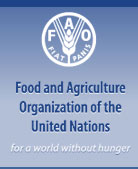 General Motors (GM) announced today that their 2009 Cadillac Escalade will be able to run on either gasoline or the alternative fuel blend of 85 percent ethanol and 15 percent gasoline (E85). The Escalade, Escalade EXT and Escalade ESV will join the 2009 line-up of flexible fuel vehicles (FFVs).
General Motors (GM) announced today that their 2009 Cadillac Escalade will be able to run on either gasoline or the alternative fuel blend of 85 percent ethanol and 15 percent gasoline (E85). The Escalade, Escalade EXT and Escalade ESV will join the 2009 line-up of flexible fuel vehicles (FFVs).
“The success of E85 as an alternative fuel depends on having the fuel readily available and having a range of cars and trucks that can use it,” said GM Vice President of Environment, Energy and Safety Policy Beth Lowery . “We will offer more than 15 flex-fuel capable models for 2009 compared with 11 this year.”
Previously announced this year, other 2009 FFV models will include the GMC Denali, Chevrolet HHR, Buick Lucerne and Hummer H2 and H2 SUT. This will assist GM in their effort to providing half their vehicle line as E85 compatible by the year 2012.


 In a letter to EPA Administrator Stephen Johnson, the group said that granting a waiver would be contrary to the agency’s mission of protecting human health and the environment. The letter adds that blame placed on ethanol for higher food prices is misguided.
In a letter to EPA Administrator Stephen Johnson, the group said that granting a waiver would be contrary to the agency’s mission of protecting human health and the environment. The letter adds that blame placed on ethanol for higher food prices is misguided. “This is not specifically an ethanol problem,” said
“This is not specifically an ethanol problem,” said  During a speech to pork producers at the expo, Deputy Agriculture Secretary Chuck Conner admitted that ethanol is a factor in the higher prices. “Ethanol is a new demand factor in the corn market, to the tune of about a third of our production going forward,” Conner said. “Fortunately, we did produce 13 billion bushels of corn and so despite large quantities going to ethanol, we actually did feed more corn to livestock than in previous years, so we managed to grow that market for both feed and ethanol.”
During a speech to pork producers at the expo, Deputy Agriculture Secretary Chuck Conner admitted that ethanol is a factor in the higher prices. “Ethanol is a new demand factor in the corn market, to the tune of about a third of our production going forward,” Conner said. “Fortunately, we did produce 13 billion bushels of corn and so despite large quantities going to ethanol, we actually did feed more corn to livestock than in previous years, so we managed to grow that market for both feed and ethanol.” Over on our sister
Over on our sister 

 A report out from the International Energy Agency (IEA) says the world will need to spend $45 trillion if it wants to cut in half the amount of carbon dioxide emissions by 2050. And part of that money will need to be spent on solar and wind power.
A report out from the International Energy Agency (IEA) says the world will need to spend $45 trillion if it wants to cut in half the amount of carbon dioxide emissions by 2050. And part of that money will need to be spent on solar and wind power. As the prices of better-known biodiesel feedstocks, such as soybeans, remain high, more refiners are looking for additional sources for the green fuel. The latest feedstock might be some of the weeds you’re battling in your garden this year.
As the prices of better-known biodiesel feedstocks, such as soybeans, remain high, more refiners are looking for additional sources for the green fuel. The latest feedstock might be some of the weeds you’re battling in your garden this year. In a statement, leaders from the Canadian Renewable Fuels Association (CRFA), the European Bioethanol Fuel Association (eBio), and the
In a statement, leaders from the Canadian Renewable Fuels Association (CRFA), the European Bioethanol Fuel Association (eBio), and the